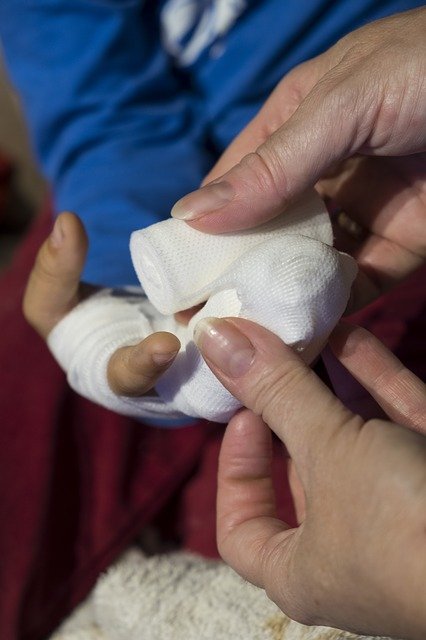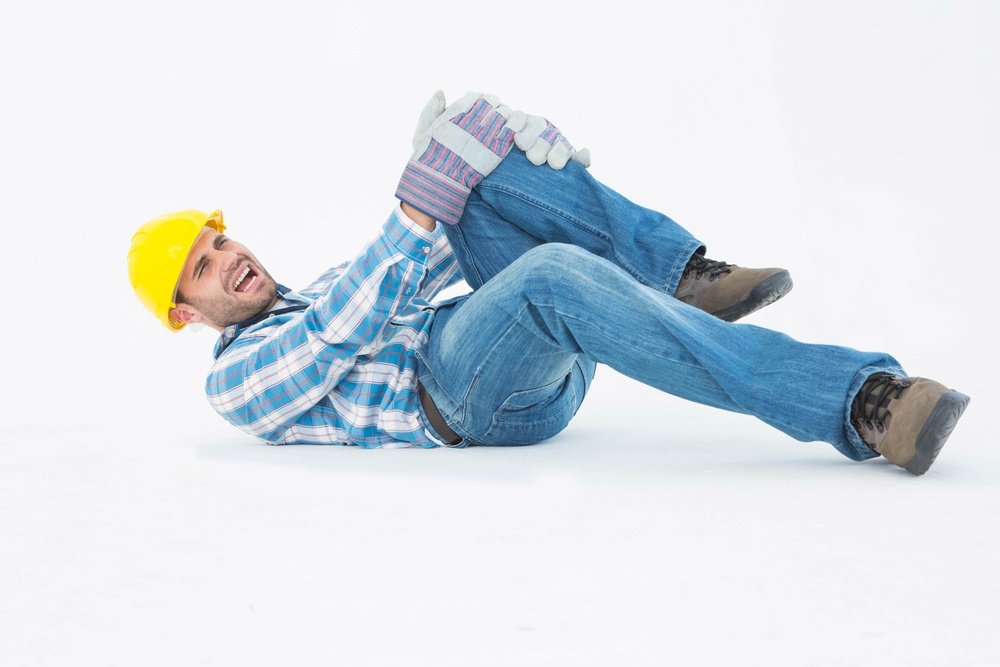
8 Of The Most Common First Aid Injuries
First aid is required in many ways, shapes and forms. It is always a good idea to have basic first aid skills just in case you need it yourself, or someone needs it around you. Here is a list with the 8 most common injuries requiring first aid and what you can do when an accident like this occurs.
Cut/Scrape:
 Cut/Scrape: If there is bleeding, press firmly over the site with a clean cloth until it stops, anywhere from three to 15 minutes. Clean with lukewarm running water and gently pat dry. If the skin is broken, apply a thin layer of antibiotic ointment, then cover with a bandage or gauze and adhesive tape. If you can’t control the bleeding after several attempts with direct pressure, call your pediatrician or head to an Emergency Room. Continue utilize antibiotic ointment and apply a new bandage daily (or more often if necessary) until the cut heals. If the wound appears to be forming or draining pus or becomes swollen, tender, or red, see a doctor right away to treat the infection.
Cut/Scrape: If there is bleeding, press firmly over the site with a clean cloth until it stops, anywhere from three to 15 minutes. Clean with lukewarm running water and gently pat dry. If the skin is broken, apply a thin layer of antibiotic ointment, then cover with a bandage or gauze and adhesive tape. If you can’t control the bleeding after several attempts with direct pressure, call your pediatrician or head to an Emergency Room. Continue utilize antibiotic ointment and apply a new bandage daily (or more often if necessary) until the cut heals. If the wound appears to be forming or draining pus or becomes swollen, tender, or red, see a doctor right away to treat the infection.
Burn:
Burn: Immediately hold injury under cold running water or apply a cold, wet towel until the pain subsides. Cover any small blisters with a loose bandage or gauze and tape. Call a doctor as soon as possible if burns are on the face, hands, or genitals, or if they’re larger than 1/4 inch anywhere on the body. If the injury looks rooted, go to the Emergency Room. For a burn covering a tenth of the body or more, don’t use cold compresses; call 911 and cover up with a clean sheet or a blanket to prevent hypothermia until help arrives. DO NOT pop any blisters yourself. If the skin breaks, apply antibiotic cream and cover the area with a bandage or gauze until it’s healed. Watch for any redness, swelling, tenderness, or discharge for these are all signs of infection.
Insect Bite/Sting:
Insect Bite/Sting: If the insect left a stinger, gently scrape the skin with your fingernail to remove it without breaking it. Refrain from using tweezers because that can squeeze more venom out of the stinger, causing further injury. Call 911 if you have trouble breathing, coughing, or develop a hoarse voice, hives, or swollen lips or tongue. To combat itching, apply 1% hydrocortisone cream or a topical antihistamine if the skin isn’t broken or scabbed. Contact your doctor if you suspect a tick bite. They may want to test for Lyme disease and other tick-borne diseases.
Splinter:
Use soap and water to wash around the splinter. Clean a pair of tweezers with rubbing alcohol and slowly pull the splinter out. Rewash the skin. If you come across a fragment that is hard to remove, leave it for a day or so to see if it will come out on its own.
Sunburn:
If you feel dizzy, weak, sick to your stomach, or are spiking a high fever—or if the burn is severe (oozing blisters form within 48 hours) and covering a significant portion of your body—go to the Emergency Room. If your only symptoms are discomfort and redness, apply cold compresses and aloe vera lotion and take some ibuprofen. Avoid creams with petroleum, which can cause infection, or anything ending in -Caine. When not administered by a professional, these drugs may be dangerous.
Nosebleed:
Sit upright and don’t tilt your head back. Loosen any tight clothing around your neck. Pinch the lower end of the nose close to the nostrils and lean forward while you apply constant pressure for five to ten minutes. Don’t release and check the nose; it could prolong the bleeding. If the nosebleed is the result of trauma, you can reduce swelling by holding an ice pack against the bridge of the nose after the bleeding slows down. If it persists for more than ten minutes or returns later, call your doctor or go to the Emergency Room to check for breakage.
Sprains, Strains, and Tears:
 When a sprain, strain, or tear takes place, the first thing to do is immobilize the affected area, elevate it, and apply ice and compression to reduce swelling. Strains accompanied by severe pain, swelling, or discoloration may require a trip to the hospital. In milder cases, rest, ice, and anti-inflammatory medication will help the area heal.
When a sprain, strain, or tear takes place, the first thing to do is immobilize the affected area, elevate it, and apply ice and compression to reduce swelling. Strains accompanied by severe pain, swelling, or discoloration may require a trip to the hospital. In milder cases, rest, ice, and anti-inflammatory medication will help the area heal.
Fractures:
Fractures are broken bones, and they can occur as a result of falls or other harsh impacts. When this happens, the affected part should be immobilized, and additional manipulation of the affected area should be avoided. Remember that a fracture could sever a blood vessel or a nerve if it is not immobilized, resulting in a much more severe injury. Immobilize the injured part, and transport the patient to the nearest hospital or medical clinic as soon as possible.
Everyone needs a well-stocked first-aid kit at home and on the go. Accidents can happen anywhere, and it is beneficial always to be prepared.
First-Aid Essentials:
- Breathing barrier in case a stranger needs to administer CPR
- Tweezers to remove splinters or ticks
- 1% hydrocortisone cream for bites or stings
- Alcohol wipes to clean scissors and tweezers
- Oral antihistamine for allergic reactions
- Non-latex gloves to pull on clean hands when treating a wound
- Acetaminophen or ibuprofen for pain and fever
- Thermometer to accurately read internal body temperature
- Triple-antibiotic ointment to prevent infection
- Hand sanitizer to clean hands in case water and soap aren’t available
- Blanket to prevent heat loss after large burns and to treat for shock
- Bottled water to rinse wounds if there is no faucet nearby
- Instant cold compress to control swelling
Safetec offers many products that would go great with your homemade first-aid kit. These items include Instant Hand Sanitizer, Antibiotic Ointments, Burn Cream, Hydrocortisone Cream, Burn Gel & Spray, Oral Pain Relief, Antiseptic Spray, and much more!
Interested in becoming a distributor of Safetec’s first aid products? Please click here!
References:
https://www.realsimple.com/health/first-aid-health-basics/basic-first-aid
https://www.safeopedia.com/2/1124/injuries-and-diseases/injuries/first-aid-for-the-10-most-common-workplace-injuries
https://www.boat-ed.com/pennsylvania/studyGuide/Treatment-of-Common-Injuries-and-What-You-Should-Have-in-a-First-Aid-Kit/101039_101039204/
https://www.parents.com/health/injuries/first-aid/fast-first-aid-tips-for-6-common-accidents/
